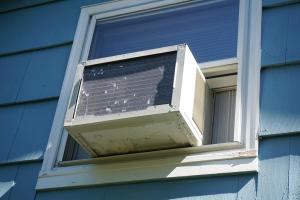
Healthy Vermont homes are:
- Dry: Damp houses provide a nurturing environment for mites, roaches, rodents, and molds, all of which are associated with asthma and poor indoor air quality
- Pest-Free: Recent studies show a causal relationship between exposure to mice and cockroaches and asthma episodes in children. Inappropriate treatment for pest infestations can exacerbate health problems because pesticide residue can pose risks for neurological damage and cancer.
- Well Ventilated: Studies show that increasing the fresh air supply in your home improves respiratory health.
- Safe: Many injuries among children and older people occur in the home. Falls are the most frequent cause of residential injuries to children, followed by injuries from objects in the home, burns, and poisonings.
- Contaminant-Free: Chemical exposures inside your home can include lead, radon, pesticides, volatile organic compounds, PFAS, and environmental tobacco smoke. The risk of exposures to asbestos particles, radon gas, carbon monoxide, and secondhand tobacco smoke are far higher indoors than outside.
- Thermally Controlled: A variety of health problems are related to prolonged exposure to excessive heat or cold when your home does not maintain adequate or consistent seasonal indoor temperatures.
- Accessible: Lack of accessibility in your home can result in reduced physical activity, trips, falls and increased isolation from family and friends. Your home should be designed, inside and out, for the accessibility of all possible occupants, regardless of their age or mobility.
How does air sealing improve my home's efficiency?
Air sealing closes the cracks and openings in your home to reduce the amount of conditioned warm/cool air that escapes. It also eliminates ways pests such as rodents can enter. Plus, it can save you money by reducing your energy consumption.

What are some hazards of poor indoor air quality?
Some key hazards of poor indoor air quality are:
- Mold
- Particulates
- Formaldehyde
- Carbon Monoxide
- Radon
- Volatile Organic Compounds
How can I improve my home's indoor air quality?
Upgrading ventilation addresses these problems and improves indoor air quality with a variety of simple remedies:
- Upgrading bathroom exhaust fans to continuously exhaust can eliminate moisture problems that cause mold and peeling paint in bathrooms. New high efficiency fans that run continuously also have the added benefit of always ensuring some air movement in the house from outside and thus better air quality.
- Ensuring heating system and kitchen range hoods are venting properly to ensure any carbon monoxide and other low-level chemicals are removed from the home. The presence of carbon monoxide is an immediate health risk.
The Energy Co-op approaches energy upgrades from a holistic perspective that promotes health and safety, year around comfort, and increases your home's resilience against moisture, contaminants and pests.
For more information and personal consultation about how we can help make your home more efficient and healthier, contact us here or give the Co-op a call at 802-860-4090.
CONTACT US FOR EFFICIENCY SERVICES
By Shelley Navari
For many Vermont homeowners, installing their window A/C units is an unwelcome warm weather ritual. See how a heat pump can make this transition easier.

